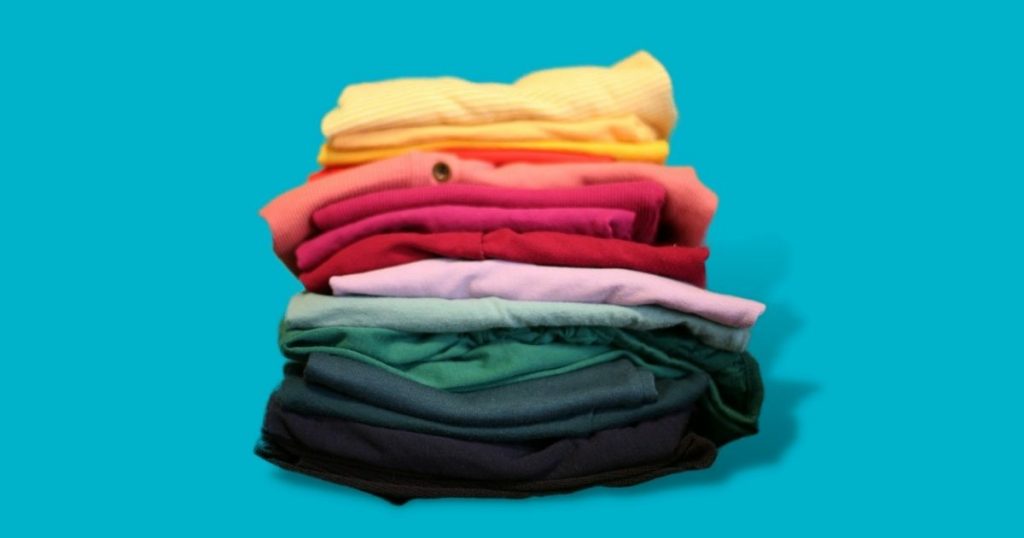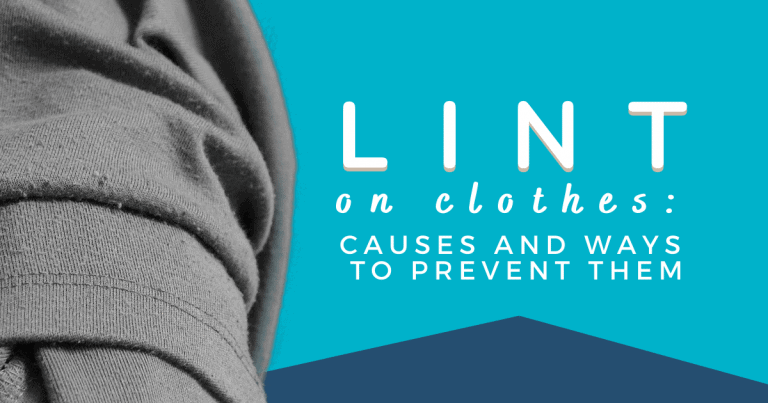
Lint is a four-letter word but has a huge effect on one’s life. Don’t believe me? Well, let me give you an example.
Have you ever had the experience of being able to find that perfect OOTD (outfit of the day) after trying everything in your wardrobe, only to have to start from scratch again because of lint all over your favorite sweater? If the answer is yes, then most probably you know how horrible and time-consuming it could be. All because of these small, but pesky, fibers.
What Causes Lint on Clothes and Where They Come From
You may be wondering after seeing lint time and time again, where on earth do they come from? The answer is pretty simple. These are fabric fibers that are released by the clothes we wash or dry on the washing machine. And they can come from all kinds of fabrics. Using the washer or the dryer can cause these extra fibers to accumulate and can increase in numbers if proper maintenance is not done.
Also, one important thing you need to know is how are lint formed. Basically, they are caused by friction in clothes when we wear them. And because of this, the fabrics loosen up and fall during washing. I know it is something that we can’t really prevent, but there are a lot of ways on how we can minimize them.
Sorting Your Laundry Can Help

Lint accumulation can be inevitable, but we can always do proven ways on how to prevent them from being excessive. One sure-fire way is sorting your laundry. This is a simple yet very effective way of making sure no fabric is in contact with fabrics that can increase lint. Let me explain further.
There are two types of fabrics when it comes to lint prevention:
- Lint Shredders – fabrics that are most likely to form lint
- Lint Attractors – types of clothes that will surely have lint on them since they draw excess fabrics towards them
Knowing how to sort your laundry and what to include in a single wash can really work wonders. Not mixing the shredders with the attractors can help minimize lint on your clothes’ production and accumulation. Another excellent reason why you should separate laundry in the washing machine is also to keep the white ones white and the colored ones colored. This has been done by generations and generations already, and it has been proven to keep the quality of your clothes for a long time.
What type of fabric collects lint?
Like what I have mentioned above, there are lint attractors. These are the kind of fibers or fabrics that are almost always collect lint and have them all stick to everywhere on the clothes just because they are the kind lint are attracted to and can easily attach to. Some of the examples of these fabrics are:
- Knitted Clothes or other items
- Linen clothes
- Man-made fibers such as synthetic
- Plush fabrics
You may be wondering why certain cloth types attract lint more than others. This is basically because of how electrostatic charged they are. In simpler terms, it means some fabrics tend to react to friction more than others, making it more possible for them to attract lint compared to other fabrics. It’s a bit scientific I know, but knowing this will surely answer the lingering question of why and how some of our outfits tend to carry more lint than others.
What type of fabric does not attract lint?
Elastic fabrics such as spandex or lycra and other fibers that tend to stretch rather than break are great examples of fabrics that are less likely to attract lint. They don’t get lint even when using the washing machine. This is mainly because of the same reason why some clothes do: friction. Spandex doesn’t have the kind of fabric quality where lint can hook themselves to. They are usually smooth, silky, and slippery, unlike cotton shirts or knitted clothes where lint can effortlessly hold on to.
How to Prevent Future Lint

Now that we know what lint is and why they exist, we should now focus our attention on how to prevent these pesky fibers from ruining your laundry and your clothes. There are a lot of proven ways on how we can stop lint from accumulating in washing machines, as well as when we hand-wash our clothes. And as responsible clothes owners, we must be aware of these different techniques in order to prolong the quality of our fabrics.
1. Wash Less Often
There are types of clothes that don’t necessarily need to be washed every time you wear them. Like jeans or sweaters. Sweat and odor don’t usually accumulate on these clothes easily. Therefore they can be worn multiple times before you take them to the laundry.
With this technique, clothes are not subjected to constant friction through the washing machine or when you hand wash your clothes. This will in turn, lead to less lint. Not just that, but it also will keep the quality of the clothes longer than when you wash them more often than needed.
2. Wash Lint Attractors Inside Out
Like what we have established, there are garments that are like magnets to lint, and they are the ones we should look out for. And since there is no way we can prevent ourselves from owning, wearing, and washing these types of clothes, we have to know effective ways on how to prevent lint on your clothes.
Washing garments such as cotton shirts inside out will decrease the possibility of accumulating lint on these attractors. It may be extra work since you need to manually turn them inside out, but it will surely be worth it in the end.
3. Hand Wash Lint Shredders
Separating clothes, as we have already talked about, is a great way to lessen lint. And this is especially important to lint shredders. They are the ones who most likely will cause the lint shedding on your laundry. And these kinds of garments are easy to find. Just look for those kinds of fabrics that are fuzzy, like cotton or wool sweaters. More often than not, they will show lint and will distribute them to your other clothes if they are not separated.
Instead of putting these kinds of fabric in the washing machine, it is better if you hand wash them separately from the others. In this way, you can be assured that there will be less friction compared to using washing machines.
4. Using Vinegar
This condiment is not only a perfect seasoning for a lot of dishes but can also save washing machines from being contaminated by lint. Vinegar can prevent lint from sticking in your washing machine’s out-of-reach corners that are often extremely hard to clean. When you use vinegar to remove lint and prevent lint from clogging your machine, you will be saving serious money from repairs or having to buy a new one.
It is very easy to use vinegar to clean those hard-to-reach areas. All you need to do is put in a cup of white vinegar on your washer, then run your washing machine on an empty cycle. In no time, all lint accumulated will be loosened and will be drained together with the vinegar.
Conclusion
We all have been in a situation where we think all hope is lost because of lint all over our OOTD’s. But it is something that is very preventable and easy to contain. You just have to know the right techniques and proven ways on how to minimize lint.
We hope you have enjoyed reading this article. Want your friends to enjoy this content as well? Feel free to share, retweet, or pin this blog article. We will really appreciate it!
Want to share this?

